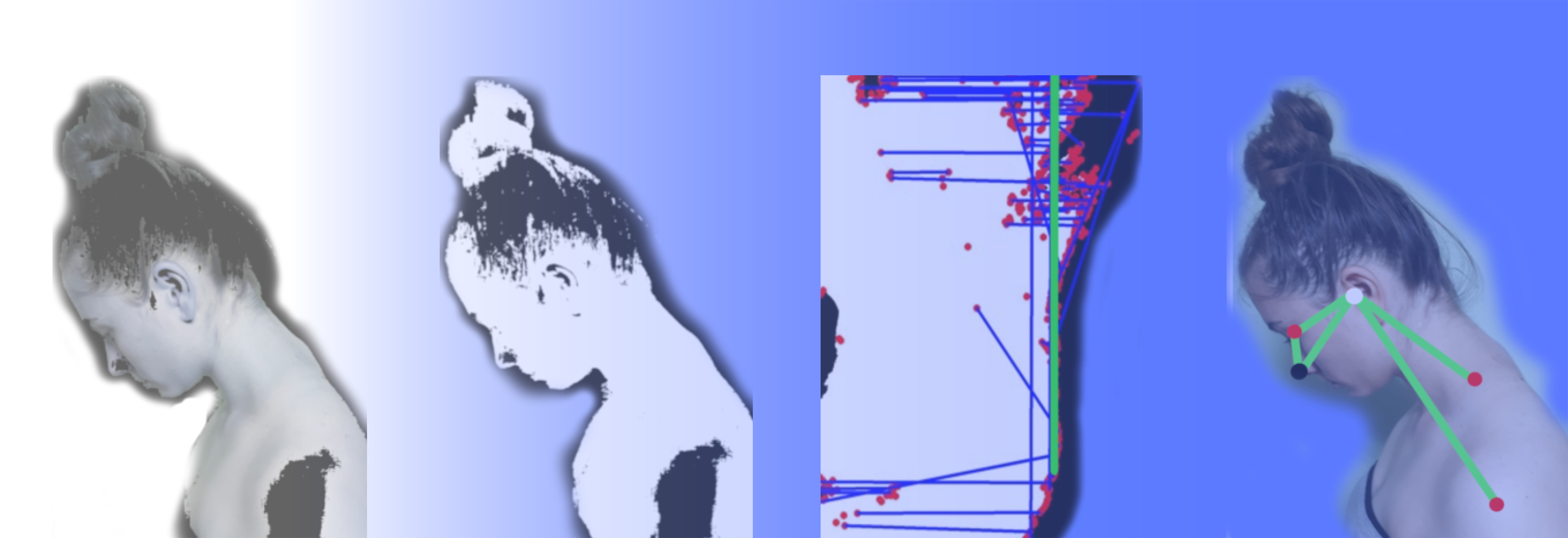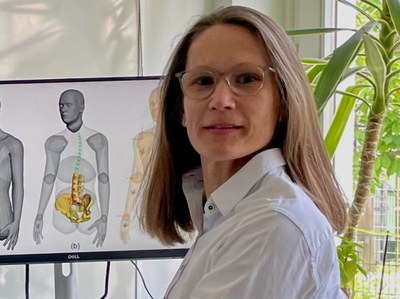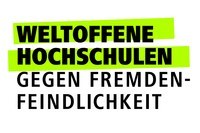Visit profile

Analyzing upper body-posture by an automated detection of the body landmarks

When using a smart device such as smartphone, the user unconsciously adopts a position that deviates from the physiological upright posture. Such a non-physiological posture can lead to spinal overload and often associated pain as well as overuse injuries of the affected structures. In order to gain a better understanding of the relationship between the posture adopted and possible loads and their effects, defined angles are measured, which provide information about the posture.
Therefore, the focus of our study is to develop a fully automated approach to analyze upper body-posture using RGB images. The aim is not to use additional markers as landmarks to detect defined key points like the tragus of the ear or the spinous process of C7.
A neural network is used in the pre-processing step to locate the head and neck regions of the upper body. Afterwards an edge detection is applied to find the pre-defined landmarks.
Find corresponding publications here:









